The smell of cooking vegetables and herbs reminds me of my grandmother’s kitchen. Her famous minestrone soup would simmer on cold winter days. This Italian vegetable soup is more than a meal; it’s a warm hug that links generations through its rich flavors.
Minestrone soup is not just about food. It’s a storyteller that mixes seasonal ingredients with old cooking ways. Every spoonful brings the taste of Italian home cooking, turning simple veggies into a satisfying meal that feeds both body and soul.
If you’re looking for comfort on a cold night or want to try real Italian food, this homemade minestrone soup is your ticket. It’s a flavorful trip through tradition. Get ready to see why this classic dish has won so many hearts around the world.
Key Takeaways
- Minestrone soup represents authentic Italian home cooking
- The recipe adapts to seasonal vegetable availability
- Each batch tells a unique culinary story
- Nutrition meets comfort in this hearty Italian vegetable soup
- Perfect for warming up and connecting with traditional cooking
What Makes Minestrone Soup a Timeless Italian Classic
Zuppa di minestrone is a true gem in rustic Italian fare. It captures the heart of traditional cooking through generations. This hearty soup is more than just a meal. It’s a culinary journey through Italy’s rich gastronomic heritage.
A rustic Italian kitchen scene featuring a large pot of colorful minestrone soup simmering on a wooden stove, surrounded by fresh vegetables like carrots, zucchini, and tomatoes, with herbs like basil and parsley sprinkled nearby, traditional Italian cookware and wooden utensils in the background, warm inviting lighting creating a cozy atmosphere.
The story of minestrone starts in ancient Roman times. Back then, cooks made nourishing meals from simple ingredients. Peasant families created this versatile soup to use seasonal vegetables and leftovers.
Origins of Traditional Minestrone
Minestrone’s roots are in rural Italian communities. Here, creativity in the kitchen was key. The soup was a practical way to:
- Use available seasonal produce
- Create filling meals with minimal resources
- Provide nutritious sustenance for hardworking families
Regional Italian Variations
Each Italian region adds its own twist to this classic soup. Some fascinating variations include:
| Region | Unique Characteristic |
|---|---|
| Lombardy | Adds rice and beans |
| Tuscany | Includes local cabbage and beans |
| Liguria | Uses more seafood-inspired ingredients |
Cultural Significance in Italian Cuisine
Minestrone is more than a recipe. It’s a cultural symbol of Italian cooking philosophy. This rustic Italian fare embodies sustainability, creativity, and family cooking. These values have defined Italian culinary traditions for centuries.
The soup is a beloved dish that connects generations. It represents the warmth and resourcefulness of Italian home cooking.
Essential Ingredients for Authentic Minestrone Soup
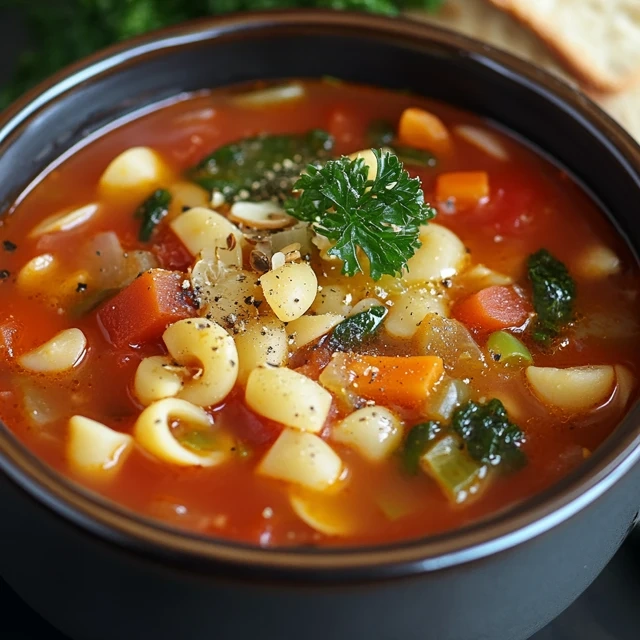
A vibrant arrangement of fresh minestrone soup ingredients including ripe tomatoes, green zucchini, colorful bell peppers, leafy spinach, chopped onions, minced garlic, assorted beans, and small pasta shells, all artistically displayed on a rustic wooden surface, surrounded by herbs like basil and oregano.
To make a real tomato broth soup, you need the right ingredients. These ingredients add depth and richness to your veggie medley soup. A great minestrone comes from using fresh, quality parts that blend well together.
For a true minestrone, pick a mix of fresh veggies that show off the season. Here are the main ones:
- Fresh Vegetables: Carrots, celery, onions, zucchini, and tomatoes are the base
- Leafy Greens: Spinach or kale add nutrition and color
- Beans: Cannellini or kidney beans add protein and texture
- Pasta: Small shapes like ditalini or shells
The tomato broth soup needs a rich, tasty base. Use ripe, quality tomatoes or a good canned tomato. Fresh herbs like basil and oregano make the soup taste like Italy.
Pro tip: Pick veggies that are in season for better taste and nutrition. Winter is for root veggies, and summer is for light, crisp ones. Keep the soup’s traditional feel while using fresh, local ingredients.
Ingredient Quality Matters
| Ingredient Category | Recommended Quality |
|---|---|
| Vegetables | Organic, locally sourced |
| Beans | Dried or high-quality canned |
| Herbs | Fresh when possible |
By picking and mixing these ingredients well, you’ll make a minestrone that’s more than just soup. It’s a feast of healthy, tasty cooking.
Kitchen Tools and Equipment You’ll Need
Making a tasty peasant’s soup like minestrone needs the right tools. Whether you’re experienced or new, the right equipment makes cooking easier and fun.
Choosing the right tools is key to cooking great peasant’s soup. The tools you pick can really affect the taste and texture of your minestrone.
Essential Cookware for Perfect Minestrone
- Large Dutch oven or heavy-bottomed pot
- Sturdy wooden spoon
- Sharp chef’s knife
- Cutting board
Optional Kitchen Gadgets to Simplify Preparation
| Gadget | Purpose | Convenience Level |
|---|---|---|
| Immersion Blender | Blend soups directly in the pot | High |
| Food Processor | Quickly chop vegetables | Medium |
| Kitchen Scale | Precise ingredient measuring | Low |
Vegetable Prep Tools for Effortless Chopping
Your vegetable prep is crucial for a good peasant’s soup. Get quality tools that help you chop better and faster:
- Mandoline slicer for uniform cuts
- Vegetable peeler
- High-quality chopping knife
- Colander for washing vegetables
Pro tip: Sharp knives and proper cutting techniques are key to preparing ingredients for an authentic minestrone soup.
Step-by-Step Guide to Perfect Minestrone
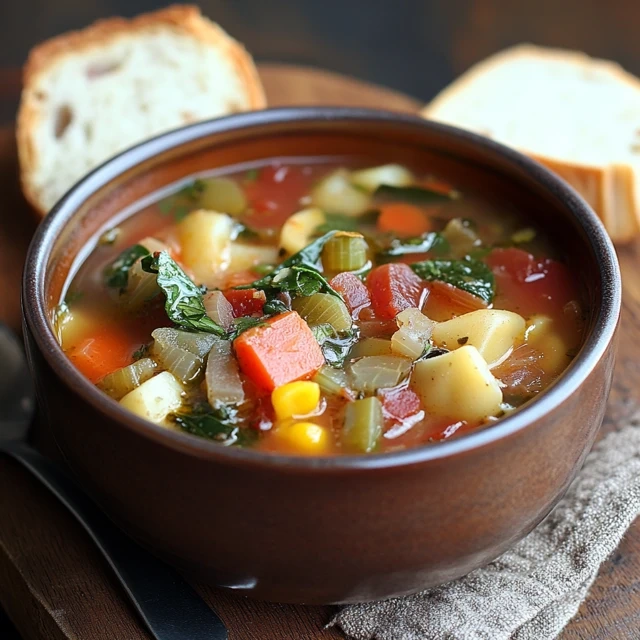
Making a real minestrone soup needs careful steps and focus. It’s not just a recipe. It’s a journey that turns simple things into a great meal.
First, get your fresh ingredients ready. For a true minestrone, chop your veggies well. Here’s how to do it:
- Chop vegetables into uniform sizes for even cooking
- Heat olive oil in a large pot
- Sauté aromatic vegetables like onions, carrots, and celery
- Add garlic and herbs for depth of flavor
- Pour in high-quality vegetable or chicken broth
The key to a great Italian vegetable soup is layering flavors. Slow cooking lets ingredients blend, making a rich taste.
| Ingredient | Preparation Time | Cooking Technique |
|---|---|---|
| Beans | 10 minutes | Simmered |
| Root Vegetables | 15 minutes | Sautéed then simmered |
| Pasta | 8-10 minutes | Added last to prevent overcooking |
When cooking minestrone, timing is key. Add soft veggies like zucchini or spinach late. This keeps them fresh and colorful. Also, taste and adjust the seasoning as you go. This ensures your soup is perfectly seasoned.
Seasonal Vegetable Options for Your Soup
Making a tasty seasonal vegetable soup means knowing the best veggies for each season. Your veggie medley soup can change with the seasons, adding new flavors and nutrients to your minestrone.
Picking the right veggies is key for a great seasonal vegetable soup. Each season brings unique produce that can make your minestrone even better.
Spring and Summer Vegetable Selections
In warmer months, your veggie medley soup can really come alive with fresh, vibrant ingredients:
- Zucchini: Tender and light
- Fresh tomatoes: Bursting with sweetness
- Green beans: Crisp and nutritious
- Bell peppers: Colorful and flavorful
Fall and Winter Produce Choices
Colder seasons need heartier, robust veggies for warmth and nutrition:
- Butternut squash: Creamy and rich
- Kale: Nutrient-dense and sturdy
- Carrots: Sweet and earthy
- Parsnips: Subtle and comforting
Year-Round Vegetable Staples
Some veggies are perfect for your seasonal vegetable soup all year:
| Vegetable | Flavor Profile | Nutritional Benefit |
|---|---|---|
| Onions | Savory base | Rich in antioxidants |
| Celery | Mild and fresh | Low-calorie hydration |
| Garlic | Intense and aromatic | Immune system support |
By using seasonal veggies, you’ll make a dynamic and tasty minestrone. It will celebrate the best produce each season has to offer.
Pasta and Bean Varieties for Traditional Minestrone
Making a true hearty soup means picking the right pasta and beans. In Italian cooking, these choices can make your minestrone stand out.
Pasta is key to minestrone’s texture and taste. Small shapes are best, making the soup feel good in your mouth and thickening it.
Recommended Pasta Varieties
- Ditalini – Tiny tube-shaped pasta perfect for soup
- Orzo – Rice-shaped pasta that adds subtle texture
- Small shells
- Broken spaghetti pieces
Bean Selection for Protein and Flavor
| Bean Variety | Flavor Profile | Cooking Time |
|---|---|---|
| Cannellini | Creamy, mild | 45-60 minutes |
| Borlotti | Nutty, rich | 60-75 minutes |
| Kidney Beans | Robust, hearty | 90-120 minutes |
Remember, cooking times differ. Soaking beans first can cut down cooking time and make them softer.
Pro tip: Add pasta late in cooking to avoid overcooking. This keeps your soup al dente and delicious.
Tips for Achieving the Perfect Broth Consistency
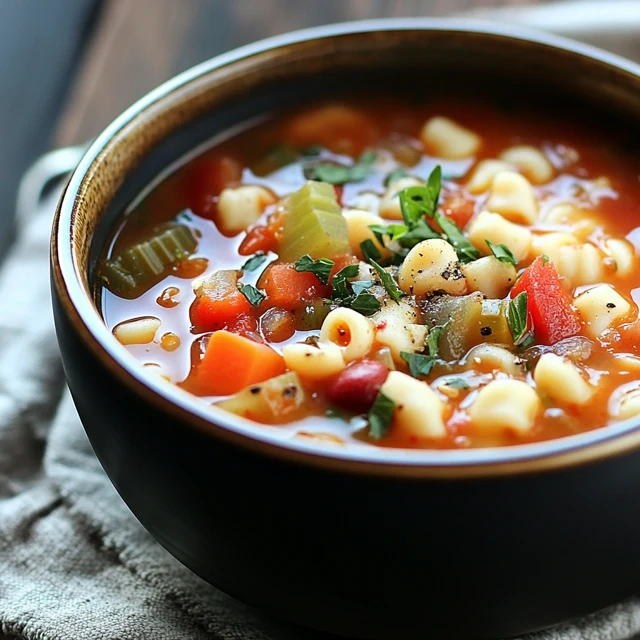
Making the perfect tomato broth soup needs focus and knowing how flavors work together. The success of your minestrone soup depends on a rich, balanced broth. This broth should enhance every ingredient’s flavor.
Mastering soup consistency is about using a few key techniques. These can turn a simple tomato broth soup into a work of art.
Balancing Flavors Like a Pro
Getting the right flavor mix is all about finesse. Here are some tips:
- Begin with aromatic vegetables
- Add flavors slowly while cooking
- Keep tasting and adjusting the seasoning
Adjusting Thickness with Precision
The perfect soup consistency is up to you. Here are ways to change the thickness:
- Thin out the broth with more liquid
- Thicken with starch from pasta or beans
- Blend some veggies for creaminess
Seasoning Secrets Revealed
| Seasoning Stage | Recommended Approach |
|---|---|
| Early Cooking | Add herbs like bay leaf and thyme |
| Mid-Cooking | Incorporate salt and ground pepper |
| Final Touch | Finish with fresh herbs and a squeeze of lemon juice |
Your tomato broth soup will be amazing with these techniques. Practice and patience are essential. They help you create a soup that truly impresses.
Storage and Reheating Guidelines
Storing your minestrone soup right is key to keeping its taste and nutrients. Knowing the best ways to store it means you can enjoy it for days.
Refrigeration Best Practices
Minestrone soup stays fresh in the fridge for 3-5 days. Use containers that seal well to keep it fresh and safe. Glass or BPA-free plastic containers with tight lids are perfect.
- Cool soup completely before refrigerating
- Store in shallow containers for faster cooling
- Keep refrigerator temperature below 40°F
Freezing Minestrone Soup
Freezing is a great way to keep your soup fresh longer. It can last up to 4-6 months in the freezer.
| Storage Method | Maximum Storage Time | Recommended Container |
|---|---|---|
| Refrigerator | 3-5 days | Airtight glass or plastic container |
| Freezer | 4-6 months | Freezer-safe containers or bags |
Reheating Tips
When you reheat minestrone soup, warm it gently. Avoid rapid high-heat methods that can break down vegetables and proteins.
- Thaw frozen soup in refrigerator overnight
- Reheat on stovetop over medium-low heat
- Stir occasionally to prevent scorching
- Add a splash of water or broth if soup seems too thick
By sticking to these tips, your minestrone soup will stay tasty and safe. This way, you can enjoy this Italian classic whenever you want.
Health Benefits of Homemade Minestrone
Minestrone soup is a nutritious comfort food with amazing health benefits. It’s not just tasty; it’s also full of nutrients in every spoonful.
Your homemade minestrone is packed with nutrients for overall wellness. It combines vegetables, beans, and optional proteins for a balanced meal. This nourishes your body from the inside.
Nutritional Powerhouse
- Rich in essential vitamins and minerals
- High fiber content supports digestive health
- Low-calorie option for weight management
Dietary Flexibility
This nutritious comfort food fits many diets. It’s great for vegetarians, vegans, or those on a gluten-free diet. You can adjust it to meet your nutritional needs.
| Nutrient | Benefits | Approximate Amount per Serving |
|---|---|---|
| Vitamin A | Eye health, immune function | 20% Daily Value |
| Vitamin C | Immune support, skin health | 25% Daily Value |
| Fiber | Digestive health, cholesterol management | 15-20 grams |
Wellness Advantages
The mix of vegetables and legumes in minestrone has multiple wellness benefits. It boosts immunity, gives lasting energy, and supports health with its nutrient-rich ingredients.
- Supports immune system function
- Provides long-lasting energy
- Promotes heart health
- Helps maintain healthy blood sugar levels
By making minestrone at home, you choose the ingredients. This means less sodium and no preservatives. Your homemade soup is a wholesome meal that feeds both body and soul.
Serving Suggestions and Accompaniments
Make your rustic Italian meal special with these serving ideas for zuppa di minestrone. The right sides can turn a simple soup into a memorable meal. It’s a way to celebrate true Italian cuisine.
- Bread Pairings: Try crusty Italian bread, garlic-rubbed crostini, or focaccia.
- Cheese Toppings: Add freshly grated Parmigiano-Reggiano or pecorino romano.
- Finishing Touches: A drizzle of extra-virgin olive oil is perfect.
To add more to your zuppa di minestrone, try these protein-rich options:
- Grilled Italian sausage on the side.
- Crispy pancetta crumbles.
- Poached egg on top.
How you present your meal is important in rustic Italian fare. Serve your minestrone in deep ceramic bowls. Add fresh basil leaves for garnish. For a family dinner or special event, pair it with a light red wine like Chianti. It completes the authentic Italian dining experience.
Conclusion
Making a hearty soup like minestrone turns your kitchen into an Italian culinary playground. This Italian vegetable soup is more than just food it connects you to traditional cooking. It has sustained families for generations.
Your homemade minestrone lets you get creative with seasonal ingredients and your taste. You can use spring’s tender veggies or winter’s hearty root crops. Each soup tells a story of your cooking journey and what’s in season.
Crafting an authentic Italian vegetable soup is both a skill and a way to express yourself. Every pot of minestrone is a chance to feed yourself and others. It’s a dish that combines flavor, nutrition, and cultural heritage.
With time, you’ll learn to balance ingredients, make rich broths, and turn simple veggies into a memorable soup. Your minestrone journey is just starting enjoy every bite.
Free Body Calculator – Know Your Body
Wondering if your body is in a healthy range? Use our Free Body Calculator to find out if you’re fit, normal, or need a lifestyle change. Get personalized tips, calorie targets, and your ideal protein, carbs, and fat intake – all in seconds.
Try Free Body Calculator Now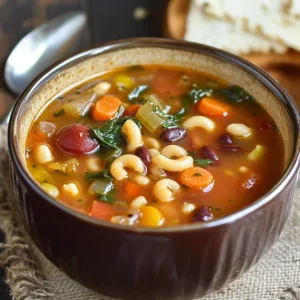
Authentic Minestrone Soup Recipe – Packed with Flavor
Ingredients
- 2 tbsp olive oil
- 1 small onion diced
- 2 cloves garlic minced
- 2 carrots diced
- 2 celery stalks diced
- 1 zucchini diced
- 1 cup green beans chopped
- 1 can 14.5 oz diced tomatoes
- 1 can 15 oz kidney beans, drained and rinsed
- 1 can 15 oz cannellini beans, drained and rinsed
- 4 cups vegetable broth
- 1 cup water
- 1 tsp Italian seasoning
- 1/2 tsp salt or to taste
- 1/2 tsp black pepper
- 1/2 tsp red pepper flakes optional
- 1/2 cup small pasta like ditalini or elbow
- 2 cups fresh spinach or kale chopped
- 1 tbsp lemon juice optional, for brightness
- 1/4 cup grated Parmesan optional, for garnish
Instructions
- Sauté the Vegetables:
- In a large pot, heat olive oil over medium heat.
- Add onion, garlic, carrots, and celery. Sauté for 5 minutes until softened.
- Stir in zucchini and green beans, cooking for another 3 minutes.
- Build the Broth:
- Add diced tomatoes, kidney beans, cannellini beans, vegetable broth, and water.
- Stir in Italian seasoning, salt, black pepper, and red pepper flakes (if using).
- Bring to a simmer and cook for 15 minutes.
- Add Pasta & Greens:
- Stir in pasta and cook for 8-10 minutes, until tender.
- Add spinach or kale and cook for another 2 minutes, until wilted.
- Stir in lemon juice for added brightness (optional).
- Serve & Enjoy:
- Ladle into bowls and top with grated Parmesan and a drizzle of olive oil if desired.
Notes
- Make It Gluten-Free: Use gluten-free pasta or skip it altogether.
- Make It Vegan: Omit Parmesan or use a plant-based alternative.
- Storage: Store in the fridge for up to 4 days or freeze for up to 2 months.
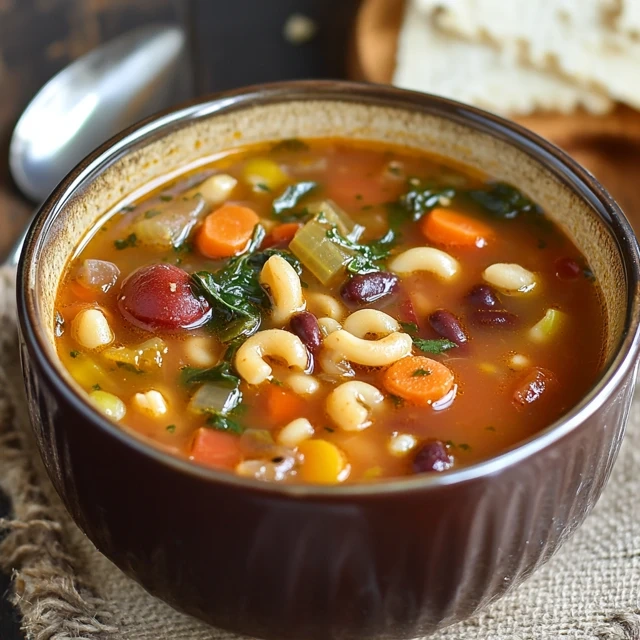

4 thoughts on “Authentic Minestrone Soup Recipe – Packed with Flavor”
Comments are closed.